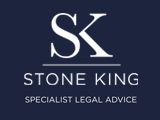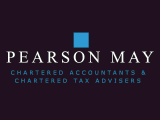Much of the focus in the press in the past week or so has, of course, been in relation to the Budget and the various measures which the Chancellor announced, both to attempt to repair the economy in the longer term but support those businesses and individuals who continue to face challenging conditions as a result of the coronavirus pandemic, writes Pearson May partner Jacqui Bowden.
We mention a few of these measures at the end of this article, but as the end of the 2020/21 tax year approaches on April 5, it is also a good time to review your affairs, making the most of opportunities to maximise your income and minimise your tax. Some tax planning may require action to be taken before April 5. I will highlight below a few of these.
Gift Aid Payments
Don’t forget that, in respect of the 2020/21 tax year, higher rate taxpayers can claim an extra 20% of the ‘grossed-up’ donation from H M Revenue & Customs (HMRC) for donations made during the tax year.
For example, if a donation of £80 is made to charity under gift aid during the year, the higher rate tax relief that HMRC will give you will be 20% of £100 i.e. an additional £20. For additional rate taxpayers (those with taxable income above £150,000 for the year), the extra relief would be £25.
Pension Contributions
If you regularly make contributions to pension schemes, you may wish to consider a one-off additional payment to be made before April 5, 2021, particularly if your total income for the current year may take you into the 40% (or even higher) income tax rates. For most individuals, the 40% rate starts to apply once income reaches £50,000.
The tax relief for personal pension contributions works in a similar manner to gift aid payments as mentioned above and as a result, tax relief is available at your marginal rate of tax. You may, however, need to bear in mind and take specific advice concerning the Annual Allowance, which limits the amount that can be contributed to a pension each year while still attracting tax relief.
For most individuals, the Annual Allowance is £40,000, but this could be more or less in certain situations, depending on factors such as the level of your income, amount of pension contributions made in earlier years and whether you are already drawing a pension etc.
High Earners
High earners also need to bear in mind that they may be at risk of losing their personal allowance. Those with ‘net adjusted income’ in excess of £100,000 for 2020/21 will lose the whole or part of their personal allowance of £12,500. For every £2 of income in excess of £100,000 the allowance is reduced by £1, leading to an effective marginal rate of income tax of 60% in the band between £100,000 and £125,000. Once net adjusted income reaches £125,000 the allowance is completely eliminated.
With both gift aid donations and pension contributions, it is certainly worth considering making a one-off payment before April 5, 2021 if you are in danger of losing all or part of your personal allowance or being subject to the High Income Child Benefit Charge (which applies when ‘net adjusted income’ exceeds £50,000).
The gross amount of any gift aid donations and pension contributions are deducted from total income when calculating ‘net adjusted income’ for these purposes.
For example, if you are expecting your total income for 2020/21 to be £110,000 (and assume for these purposes that you haven’t yet made any pension contributions in the tax year), by making a net pension payment of £8,000 before April 5, 2021, could save you additional income tax of £4,000, over and above the basic rate relief, meaning the effective cost (after tax relief) of the pension payment is actually only £4,000. In other words, you obtain the benefit of £10,000 being contributed to your pension scheme at a cost of only £4,000 – a massive 60% relief.
The above is just a small selection of some of the tax planning points included in Pearson May’s annual publication Financial Perspectives – End of Tax Year Guide Spring 2021 available for free on pearsonmay.co.uk or by phoning or emailing its offices at mail@pearsonmay.co.uk.
Budget 2021
As mentioned above, the Chancellor’s recent Budget included various measures relevant to individuals, including an extension to the furlough scheme and Self-Employment Income Support scheme, and a rise in the personal Income Tax allowance for 2021/22 to £12,570 (but a ‘freeze’ in this allowance for the next four years thereafter).
Similarly, the Capital Gains Tax annual exemption, Inheritance Tax nil-rate bands and the pensions lifetime allowance are all to remain at their current levels until 2025/26. The current Stamp Duty land tax holiday was also extended to June 30, 2021, (and at a reduced level until September 30, 2021).
The most notable change which will affect many businesses in the forthcoming years was an increase in the Corporation Tax rate to 25%, with effect from April 2023.
This will however only apply in full once a company’s profits exceed £250,000. Companies with profits of £50,000 or less will continue to pay the existing rate of 19% and those with profits between £50,000 and £250,000 will be liable to an effective rate between 19% and 25%.
Further details of the Budget announcements are included in Pearson May’s 2021 Budget Report publication, which is also available on its website or by contacting one of its offices.
The above is for general guidance only and no action should be taken without obtaining specific advice. Such advice in relation to pension schemes should be obtained from a pension adviser or an independent financial adviser.



















